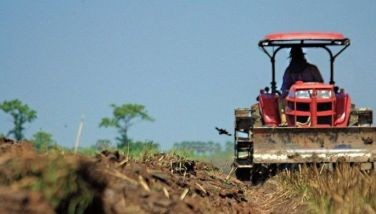She went from rice to bugnay, and it paid handsomely
TABUK CITY, Kalinga ,Philippines — Like a true scientist who never stops “wandering” about looking for answers to myriad questions about life and how to make it easier, this biologist’s curiosity led her to a discovery that has brought herself and her family some measure of fame and fortune.
Kalinga native Corazon Kub-ao Ryan, 52, a Gawad Saka national awardee in the fishery category in 1997, raised not a few eyebrows when she and her husband, Jeremy, converted a hectare of their prime rice land into a “bugnay” or mulberry farm.
At that time, a hectare of prime rice land in the Tabuk plains would yield a minimum of 150 cavans of palay, a record that is not easy to duplicate, much less surpass when the same area is planted to other crops. Such a move was thus considered too much of a gamble that other farmers in the area wouldn’t even begin to think of.
But the Ryans went ahead anyway and they never regretted their decision. They are now producing bugnay wines that have been embraced by the market.
“It paid more…. And more…,” Azon, a BS Biology graduate from the University of Baguio, said referring to their decision to go into bugnay farming and wine making.
“We intend to have more,” a beaming Azon said while stripping a branch for marcotting at her bugnay tree plantation in Mapaoay, Ipil in this city.
The Ryans are expanding their bugnay tree farm by half a hectare and plan to convert even more areas later on.
From the first harvest in 2008, the Ryans were able to sell some 1,600 bottles (700 ml) of bugnay wine and juice concentrate at P300 and P400 per bottle, respectively.
Aside from the wine and juice sales, the couple are also making brisk sales of marcotted bugnay seedlings priced anywhere from P500 to P2,000 each depending on the size of the trunk.
While their prices are higher than those other locally-produced bugnay wines which can be had for P200 or even as low as P100, Azon said they have no problem selling their stock as many customers prefer to buy the wines churned out by the Ryan and Sons Winery even if they are pricier.
“People love it because we pick the ripe fruit,” Azon said.
Even while it is some ways away from the center of the city (seven kilometers), the Ryan farm is one of the main destinations of city-tour packages here because of its uniqueness.
It is an integrated farm. “We do aquaculture here (which is integrated with the winery).”
Azon said many of her bugnay juice concentrate customers are medical doctors “because they know the health and nutritional value of the juice.”
Depending on the creativity of the individual, bugnay juice could be used for numerous purposes including beverage and marinating agent, she said.
“While other bugnay wine makers get their berries from wild bugnay trees, ours come from a cultured plantation. We use vermicast in the marcotting and planting stages and the processing of vermicast entails cost,” Azon said enthusiastically.
The Ryans produce their own vermicast in their farm. Vermiculture and composting help us a lot in the plantation, Azon beams.
Corazon said that although she counts among her bugnay seedling clients some local farmers, she does not know of any farmer who is intending to go into bugnay berry production in the scale they are doing.
Though Azon begs off recommending farmers to shift from rice production to bugnay, “because if something goes wrong, they will blame me.”
She sees their orchard as a boost to the local wine-making industry in Kalinga because except for her, the wine makers are dependent on wild bugnay trees for their raw materials.
“It helps in the livelihood of women engaged in wine-making and also those doing food processing because bugnay is excellent for jam, jellies, juice and candies,” she says.
“People who know wines (like me who loves wines) will appreciate quality bugnay wine even if these cost much higher.”
With the Ryans both growing up in the city – Jeremy, now 57, spent his early years back in UK, while Azon grew up in Baguio City – they were not the couple one would expect to choose a slow agricultural lifestyle like the one in Tabuk where they decided to settle
“We looked from Kalinga to Laguna for a hectare of land.”
My life was perhaps a long-time experiment, Azon said, adding that she approached their farm venture “in a scientific way.”
The traditional bugnay tree produces fruits once only in a year. “I am discovering how this wonder tree can bear twice a year,” Azon enthuses. “There is a female that bears fruits twice a year (at least in my environment).”
Unlike traditional bugnay tree growers and wine makers, Azon likes to push her plantation to the limit. Not intrusive though because everything is organic and scientific, she said. “I want to learn things everyday,” says the self-made scientist who is now being flocked by DOST, DA and other government agencies’ researchers and officials for her discoveries and studies at her farm.
- Latest




























